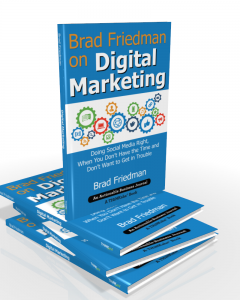 Writing for the web became a marketing specialty several years ago as Google was first asserting its dominance over other search engines. Observers who closely followed the company began to piece together the algorithm riddle. Many of us who were training to write for the web found Google was the driving force to perfecting the search function.
Writing for the web became a marketing specialty several years ago as Google was first asserting its dominance over other search engines. Observers who closely followed the company began to piece together the algorithm riddle. Many of us who were training to write for the web found Google was the driving force to perfecting the search function.
Then everyone began obsessing about keywords. And in many ways, keywords destroyed writing. SEO became an outright preoccupation, making writing and communicating difficult for both communicators and targeted audiences. As one who frequently searched with Google and struggled to write content that met its standards, I could see frustration on both sides. In my opinion, the keyword frenzy greatly contributed to the rise in black-hat SEO and other nefarious marketing practices.
It’s All Gone Back to Good Solid Content
Since Hummingbird’s release in August 2013, writing for the web has become enjoyable again. Hummingbird freed writers from inserting awkward phrases into content like “Denver area divorce attorney” or “Washington D.C. coffee shop.” Go back and be natural, Hummingbird told us.
Regular updates in the form of Panda, Penguin, and Pigeon (someone at Google really likes birds that start with the letter “P”) swooped in on bad guys like link farmers and fake gateways. Although SEO bloggers made a huge deal about every update, what Google did was reassuring us about how to write. In many cases, it was a matter of adjusting “forced” content to make it natural and easier to read.
Above all, Google wants content that meets what’s specified in the search. They insist they want to give searchers what they are looking for. Consequently, search has become quite personalized for Google users, many of whom may not be completely aware of how much Google knows about them but who are getting what they want quickly and accurately. (That’s the price we pay for demanding lightening-fast search results.) Most content search has become very local and targeted as well. It’s almost like consumers are picturing exactly what they want to see, telling Google with keyword strings, and getting more satisfying results.
So how does a marketer write to meet diverse search queries? As well as s/he can, and with as much authority and clarity as possible. This means talking to the real experts behind the scenes, like sales people and developers, to maximize understanding of what customers want and what products deliver. Involve them with reviewing content before it’s published, ask for feedback, and take every opportunity to learn more about new products and services. Everyone needs to interact so that writers can write more accurately.
Content Should Naturally Reflect SEO Priorities
This isn't to say there is no place for keywords or SEO in our content. Both are essential, but they should guide, not direct, the content. What’s important is getting out the message that we (the business) have the goods or services you (the customer) are looking for.
Moz founder Rand Fishkin recently spoke with the Content Marketing Institute about his concern that quantity, rather than quality, has taken over many marketers’ priorities when it comes to content marketing and development.
While there’s no question that fresh content is great for businesses hoping to get more results from search, they still need to think about SEO as they write. Invest in keyword research, Fishkin says. “[Use] a few terms and phrases intelligently in the title, headline, and content to attract search engines.” I would add that keywords can be easily incorporated into subheadings as well.
Fishkin also observed that many companies are relying on blogging too much, hoping for a viral hit, rather than creating a more holistic marketing strategy. This, plus the propensity to rely too much on standard measurements may be creating more work and stress than necessary. Social media, which isn't as active in actual conversion, may be more useful than ROI measurements indicate. They are very likely contributing to overall site traffic and encouraging return visitors more often than they get credit for.
That last factor has in fact, become more prominent in recent months as more marketers discuss the impact of impressions. Just because someone doesn't click on a link doesn't mean that it hasn't been noticed and noted. Facebook and LinkedIn both measure impressions and have been highlighting them for paid advertising and features.
Do you have something to add to this post? Please share it in the comments.












